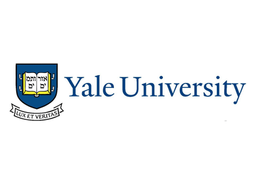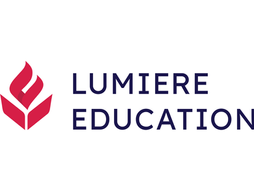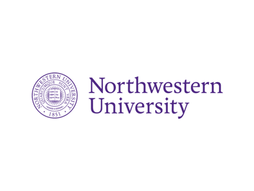Everything You Need to Know About the NASA TechRise Student Challenge for Middle School Students
As a middle school student with an interest in STEM, finding a competition that not only engages your creativity but also allows you to build and test real-world experiments is a rare opportunity. The NASA TechRise Student Challenge offers exactly that — an extraordinary chance to develop and test your experiment as part of a commercial flight plan. This unique program, backed by NASA’s expertise and resources, not only bolsters your resume but also deepens your understanding of STEM applications in the aerospace sector.
Engaging in the TechRise Challenge gives you hands-on experience with real-world problems fostering innovation and critical thinking skills that will serve you well in future academic and professional pursuits.
What is NASA’s TechRise Student Challenge?
The TechRise Student Challenge is an annual competition organized by NASA, designed to inspire middle and high schoolers to explore and innovate within the field of aerospace. Through this challenge, student teams propose technological experiments for flight testing on NASA-sponsored high-altitude balloons or rocket-powered landers. The program, part of NASA’s Flight Opportunities initiative, invites participating student teams to apply classroom STEM knowledge, enabling a unique learning experience not found elsewhere.
You will be involved in every step of the process—from drafting ideas to building and eventually fitting your experiments on the weather balloon or rocket. This full-cycle experience provides a comprehensive understanding of both the scientific and engineering principles at play. Aside from gaining practical experience in designing and executing experiments, the depth and scope of the challenge will also teach you general skills like critical thinking, problem-solving, teamwork, and communication.
Is it prestigious?
The TechRise Challenge is highly prestigious, not only due to its direct association with NASA but also because of the selective nature of the competition and the depth of learning it offers. Out of hundreds of submissions each year, only 60 teams are chosen to build and fly their experiments, based on the innovation and scientific merit of their proposals.
Winning teams receive funding and resources to bring their experiments to life, providing an intense, project-based learning experience that is unparalleled in its scope. Past projects have explored such unique and esoteric concepts as ferrofluid behavior, the effects of cosmic rays on plant seeds, infrasound, polymer analyses, and plenty of other topics that you would otherwise be hard-pressed to explore in a school lab.
All in all, the TechRise Challenge is highly prestigious, both for its association with NASA and for the phenomenal exposure to advanced scientific concepts, resources, and real-world context it provides.
Who is eligible to participate?
To participate in the NASA TechRise Student Challenge, you must:
Be in grades 6-12.
Attend a U.S. public, private, or charter school.
Form a team with at least three other students from your school. (Note: Team members can be from different grades but must attend the same school.)
Secure an adult mentor from your school to function as Team Lead.
No prior experience is required to participate in TechRise, and neither is there any application fee.
How is the TechRise Challenge structured?
The TechRise Challenge is structured as follows:
Step 1: Team formation
Starting August 1, teams of four students, along with their Team Lead, must register on the Future Engineers website for the TechRise Challenge.
Step 2: Review submission guidelines
Teams will review the Proposal Template and Guide, and the Team Lead will need to familiarize themselves with the Educator Guide, both provided by NASA. This is a critical step in the process, as the experiment will need to meet specific guidelines related to materials, space, and weight constraints, given the physical requirements of fitting onto the lander or balloon. There are two educator workshops, one in August and one in September, as well as a virtual field trip for the participating teams in September.
Step 3: Choose your option – Rocket-powered lander or Balloon
Teams will decide whether to design their experiment for a high-altitude balloon or a rocket-powered lander:
High-altitude Balloon: Offers approximately four hours of flight time at 70,000 feet and exposure to Earth’s atmosphere, high-altitude radiation, and panoramic views of the planet.
Rocket-powered Lander: Simulates a 120-second flight at an altitude of approximately 80 ft (~25 m) over a test field designed to look like the Moon’s surface.
Each platform presents unique challenges, and teams should thoroughly review the respective guidelines to determine which experiment best suits their goals. Make sure to thoroughly review the Lander Guidelines or Balloon Guidelines before making your decision, to understand the differences in design requirements and what experiments would work best with these conditions.
Step 4: Plan your experiment
Once you’ve made your choice, it’s time to brainstorm, plan, and design your experiment. Future Engineers offers several resources:
Using these resources and with the guidance of your team lead, you’ll need to establish a coherent experiment design that is within the criteria mandated and achieves the intended purpose.
Step 5: Submit your proposal
Your complete experiment proposal must be written in the NASA TechRise Proposal Template and be submitted by your Team Lead. Ensure that your proposal answers the following questions:
What is your team’s experiment idea?
How does it work, and what components and technologies are needed for it to function?
Why are you submitting this idea, what is its larger impact?
Step 6: Winning teams selected
In January, 60 winning teams will be selected by NASA — 30 for each platform. As a winning entry, your team will receive:
$1500 to build your experiment.
A flight box in which to build the experiment.
An assigned spot to test the experiment on a high-altitude balloon or rocket-powered lander test flight.
Technical support from Future Engineers will be provided throughout the build phase.
Step 7: Build and submit your experiment
From January to May, winning teams will work on building their experiments with regular check-ins from the TechRise advisory team. All finished designs will need to be physically mailed in by the due date so that they may be launched on their corresponding flight test vehicles in the summe.
Pros and cons of participating in the NASA TechRise Student Challenge
Pros:
Rich, contextual learning experience: You will gain hands-on experience in a real-world scientific inquiry and experiment execution, allowing you to deepen your understanding of complex STEM concepts through practical application. This challenge is not a simulation or a theoretical exercise, it is a real engineering design for an actual flight test.
Exposure to aerospace engineering: You will be guided by real engineers and designers, tackling the same problems that any aerospace engineer deals with daily.
Prestigious association with NASA: The TechRise Challenge is one of NASA’s flagship programs, and the prestige of having it on your profile will serve as a stamp of competence when it’s time for your college applications.
No cost of entry: The Challenge is free to enter and apply for, and does not even need prior experience. It is highly accessible and winning teams receive financial support to build their experiments.
Cons:
Time and effort intensive: The Challenge requires a substantial time commitment, from planning to execution, which may conflict with other school responsibilities. It is not a one-off project, it is a near full-year investment. You’ll have to juggle the workload with your school and extracurricular commitments.
Highly competitive: The selective nature of the challenge can be daunting and may not guarantee participation. Hundreds of teams apply and only 60 are shortlisted.
Our review: is it worth it?
The NASA TechRise Student Challenge is a highly recommended opportunity for middle and high school students passionate about STEM and especially aerospace. The experience of working on real-world problems under NASA’s guidance offers unmatched educational benefits, preparing students for future success in STEM fields. With no cost to enter and extensive resources provided, the challenge represents a unique and prestigious opportunity that can significantly enhance your academic and career trajectory.
One other option - the Lumiere Research Scholar Program
If you’re interested in pursuing independent research in STEM, you could also consider applying to one of the Lumiere Research Scholar Programs, selective online high school programs for students founded with researchers at Harvard and Oxford. Last year, we had over 4000 students apply for 500 spots in the program! You can find the application form here.
Also check out the Lumiere Research Inclusion Foundation, a non-profit research program for talented, low-income students. Last year, we had 150 students on full need-based financial aid!
Stephen is one of the founders of Lumiere and a Harvard College graduate. He founded Lumiere as a PhD student at Harvard Business School. Lumiere is a selective research program where students work 1-1 with a research mentor to develop an independent research paper.









